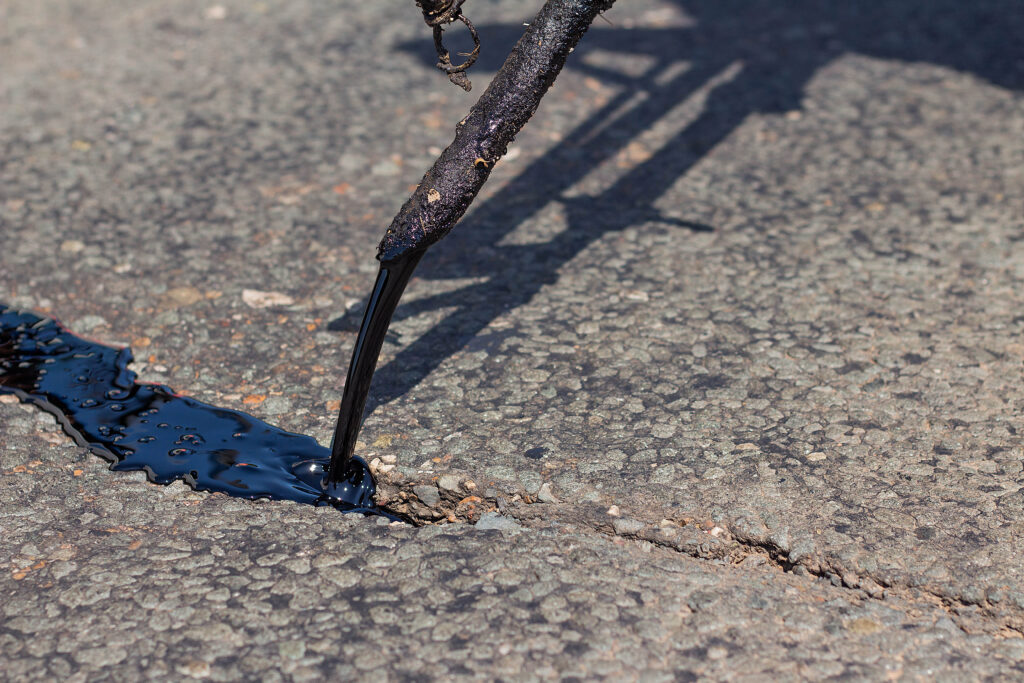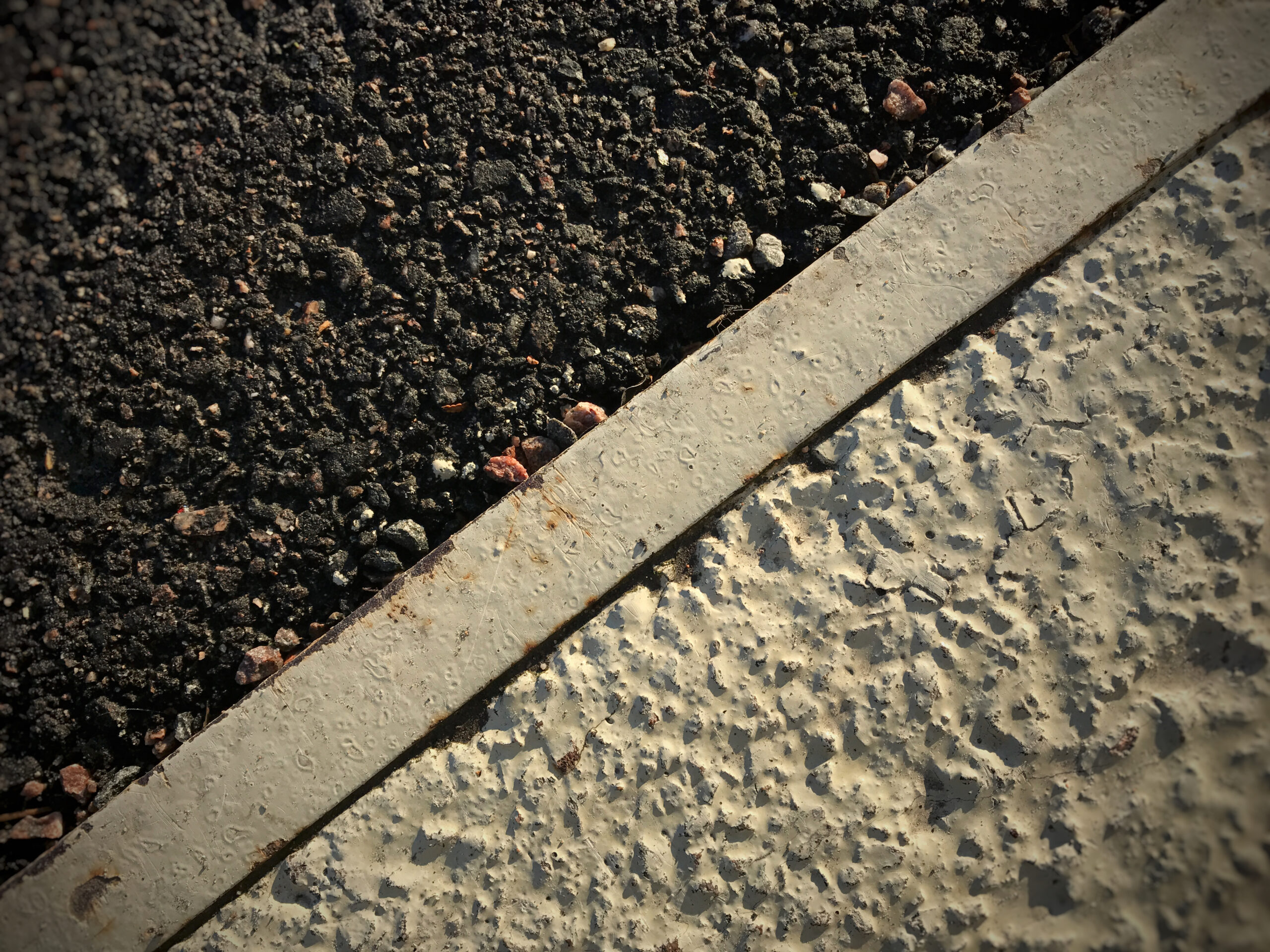
Are you looking to give your asphalt driveway, parking lot, road, or walkway a much-needed upgrade?
If your pavement is starting to crack or fade, you’re probably deciding between sealcoating and repaving. One is cheaper and quicker, the other is more durable, but which option saves you more in the long run?
In this blog, we’ll compare both, break down the costs, and help you choose the right fix for your surface and your wallet.
Sealcoating and Repaving: What’s the Difference?
Sealcoating is a protective layer applied over your existing asphalt surface. It helps to seal minor cracks, restore color, and prevent damage from weather, UV rays, and chemicals. It’s a quick and affordable way to keep your pavement in good shape without replacing it.
Repaving, on the other hand, involves completely removing the old asphalt and replacing it with a fresh layer. It’s the best solution when your pavement has significant cracks, potholes, or structural issues that sealcoating can’t fix.
Let’s compare both comprehensively so you can understand which option is best to keep your pavement in pristine shape.
Cost Comparison: Which Option Is More Budget-Friendly?
When it comes to cost, sealcoating is significantly more affordable upfront.
- Sealcoating: Typically ranges from $0.15 to $0.25 per square foot. For a standard 600-square-foot driveway, this amounts to approximately $90 to $150.
- Repaving: Costs are higher, ranging from $3 to $7 per square foot. That same 600-square-foot driveway would cost between $1,800 and $4,200 to repave.
Lifespan and Durability
The longevity of your pavement depends on the maintenance method you choose.
- Sealcoating: It extends the life of your asphalt by 2-5 years per application. Regular sealcoating can keep your pavement in good condition for up to 30 years if there are no underlying structural issues.
- Repaving: Provides a new surface that can last 15–20 years with proper maintenance. It’s a more durable solution for pavements with extensive damage.
Maintenance and Aesthetics
Sealcoating and repaving have their quirks over the other, both in terms of maintenance and aesthetics. Let’s take a better look.
Sealcoating:
- Appearance: Sealcoating gives your pavement a sleek, black finish that significantly enhances curb appeal.
- Maintenance: Since sealcoating acts as a protective layer, it requires reapplication every 2–3 years to maintain its effectiveness and appearance.
- Quick Application: One of the main advantages of sealcoating is its fast application. The job can typically be completed in a single day, with minimal disruption to your routine.
Repaving:
- Appearance: Provides a brand-new surface, eliminates any cracks or potholes, and dramatically improves the overall look of your property.
- Maintenance: It requires less frequent maintenance in the initial years, but, you’ll need to apply sealcoating to protect the new surface from wear and tear.
- Longer Process: Typically takes several days to complete and cure fully, which means you’ll face extended downtime during the project.
How Long Does Each Method Take?
Sealcoating is a relatively quick process. Depending on the size of the surface, it usually takes just 1 day to apply. After application, the sealcoat needs about 24 to 48 hours to fully cure, as explained in the post-sealcoating guide.
Repaving, on the other hand, is a much more involved process and can take several days to complete. It involves removing the old asphalt, preparing the surface, and laying the new layer of asphalt. The new pavement needs time to cure and settle, which can take 2-3 days.
Which is Better for The Environment?
Sealcoating requires fewer resources and produces less waste. Some sealants are made from recycled materials.
When it comes to being eco-friendly, sealcoating is generally the better option. It uses fewer materials and is a quicker process, which means less energy and resources are used. Regular sealcoating also helps avoid more extensive repairs, which can save resources in the long run.
On the other hand, repaving requires more resources and energy because it involves removing the old surface and laying down a new one. However, asphalt is recyclable, and many contractors reuse it in new projects.
Now that you’re well aware of the differences between sealcoating and repaving, let’s see which option is suitable for you.
When to Use Sealcoating
Sealcoating is the best choice when your pavement is still in relatively good shape but showing signs of wear. Here’s when you should consider sealcoating:
- Minor surface damage: If your asphalt has small cracks, fading, or discoloration but no significant structural issues, sealcoating is an effective, cost-efficient solution to protect and extend its lifespan. It prevents small cracks from spreading, making crack sealing prevention an important part of long-term maintenance.
- Preventive maintenance: If you’ve had sealcoating done in the past (within the last 2–3 years), it’s a good idea to reapply it regularly to keep your surface in top condition. Following a sealcoating maintenance schedule helps prevent minor issues from turning into bigger, more expensive problems down the road.
- Boosting curb appeal: Use sealcoating if you’re looking to improve the look of your driveway or parking lot without spending too much. It gives your pavement a fresh, glossy finish that enhances its overall appearance.
- Cost-effective option: The lower cost of sealcoating makes it a great choice for homeowners or businesses for a budget friendly-option to maintain their pavement.
When to Use Repaving
Repaving is the better choice when your asphalt has more severe damage that sealcoating can’t fix. Here’s when repaving might be necessary:
- Extensive damage: If your pavement has deep cracks, potholes, or areas that are structurally compromised, repaving is the right solution. Sealcoating can’t fix these underlying issues, and ignoring them can lead to further deterioration.
- Aging pavement: If your driveway or parking lot is more than 15 years old and has seen better days, repaving will restore its integrity.
- Long-term solution: If you’re planning to keep your property in great shape for years to come, repaving provides a new, durable surface that will last much longer than sealcoating.
- Structural issues: If the foundation or sublayers of your pavement are compromised, repaving is the best option. It makes your pavement structurally sound and capable of withstanding the test of time.
In short, if your pavement is in poor condition or needs a complete overhaul, repaving is the best way to go. It provides a fresh surface and can resolve deep issues that sealcoating can’t address.
Quick Comparison Table: Sealcoating vs. Repaving
Here’s a quick side-by-side comparison to help you easily see how sealcoating and repaving stack up across key factors.
| Feature | Sealcoating | Repaving |
| Purpose | Preventive maintenance to protect and extend surface life | Replaces damaged or aging asphalt with a new surface |
| Cost | $0.15–$0.25 per sq. ft. (low upfront cost) | $3–$7 per sq. ft. (higher upfront investment) |
| Lifespan | Extends pavement life by 2–5 years per application | New surface lasts 15–20 years |
| Ideal For | Minor cracks, fading, and surface wear | Deep cracks, potholes, and structural issues |
| Maintenance Frequency | Every 2–3 years | Minimal in early years; may need sealcoating later |
| Curb Appeal | Fresh black finish improves appearance | Brand-new surface enhances overall look |
| Time to Complete | 1 day or less | Several days including curing time |
| Environmental Impact | Low, but uses fewer resources and produces less waste | Higher, but asphalt can be recycled |
| When to Choose | For regular maintenance on mostly intact pavement | For older or severely damaged pavement needing full overhaul |
Frequently Asked Questions
What is the difference between a sealer and a resurfacer?
A sealer is a protective coating applied to the surface of asphalt to shield it from damage caused by UV rays, water, and chemicals. It doesn’t fix existing damage, but it helps prevent future deterioration.
A resurfacer, on the other hand, involves laying a new layer of asphalt over the existing surface to repair cracks and restore the pavement’s appearance and functionality. It’s a more intensive treatment than sealing.
What is the difference between an asphalt rejuvenator and seal coat?
An asphalt rejuvenator penetrates the asphalt to restore lost oils to improve flexibility and extend the pavement’s life. It’s especially useful for older, weathered asphalt.
A seal coat is a thin surface layer applied to protect against environmental factors like UV rays and water. While it provides a protective barrier, it doesn’t address underlying issues.
Is resurfacing a parking lot better than repaving?
Resurfacing works well when the foundation is solid and damage is only on the surface. It is quicker, less disruptive, and costs about two to four dollars per square foot. Repaving removes and rebuilds the base to fix deep issues, but costs two to three times more.
Is it better to resurface or replace concrete?
If your concrete has minor issues like surface cracks or unevenness, resurfacing can be a cost-effective solution. However, if the concrete is severely damaged, cracked extensively, or has structural issues, replacement is the better option.
Should I seal or repave my driveway?
You should plan to have your driveway sealed again every three to five years. Resurfacing is only needed about every fifteen to twenty years. In the meantime, sealing is a great way to protect your pavement and prevent bigger repairs later.
Sealcoating or Repaving: What’s Your Final Move?
Deciding between sealcoating and repaving depends on the condition of your pavement, your budget, and your long-term goals.
- Choose Sealcoating if your pavement is in good shape and you want to maintain its appearance and prevent future damage.
- Choose Repaving if your pavement has significant damage that can’t be addressed with sealcoating alone.
If you’re a business owner located in Colorado and your property’s pavement needs an overhaul, get in touch with Asphalt Coatings Company. We provide commercial asphalt paving, parking lot maintenance, concrete solutions, and much more.
Our proven track record of successful projects and happy clients speaks for itself!


